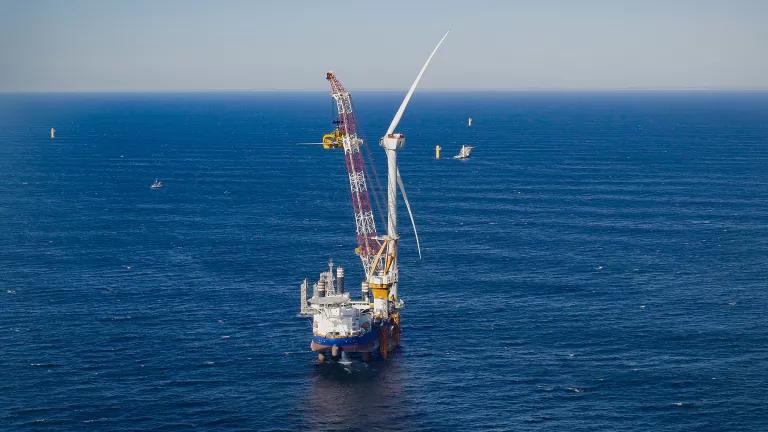A Sunny Outlook for Solar Energy
Here’s some incredible news out of the Department of Energy (DOE): We can expand our solar energy 40-fold over the next 30 years, eliminate carbon emissions from the power grid and create a stunning $1.7 trillion in net economic and health benefits.

Here’s some incredible news out of the Department of Energy (DOE): We can expand our solar energy 40-fold over the next 30 years, eliminate carbon emissions from the power grid and create a stunning $1.7 trillion in net economic and health benefits.
DOE recently issued its Solar Futures Study, which showed how growing solar energy capacity from 78 gigawatts today to around 3,000 GW by 2050 can help decarbonize our electric grid while electrifying a big chunk of the rest of our energy system.
The study models ways to clean up the U.S. electric system, reducing CO2 emissions by 95 percent by 2035 and 100 percent by 2050. The DOE looks at achieving these goals both under a scenario with business-as-usual electricity demand and, more importantly, under a scenario where we electrify a lot of the rest of our energy system in buildings, transportation and industry. This decarbonization plus electrification scenario is important, because if we’re going to avoid the worst impacts of the climate crisis, we must replace direct fossil fuel use in vehicles and industry, too, and that will require a lot of electronification.

DOE’s study takes a remarkably broad look at what these scenarios mean for our country. It looks at costs, of course. A solar future will make the electric system cheaper through 2035 compared to business as usual. The grid will be a little more expensive in 2050 but the avoided climate damages and cleaner air lead to a net savings of $1.7 trillion.
The study also looks at solar through the lens of equity, an area where there is a lot of work to do. Just the inclusion of this section is a breakthrough. The study carefully walks through what is known and what needs to be researched in terms of the distribution of benefits, the distribution of costs, procedural justice and a just transition. A general conclusion is that we need to target a lot more effort and investment to make sure that the benefits of solar are more equitably shared and that the costs are more progressively distributed.
In addition, the study considers how solar may support new jobs growth. Currently the solar industry employs 230,000 people in the U.S. and, according to DOE, this number will grow to between 500,000 and 1.5 million by 2035.

The study also considered deployment rates, sector by sector use, geographic distribution, water use impacts, and land. For instance, utility scale solar projects take land, but the maximum land used by solar in DOE’s analysis is just 0.5% of the surface area of the United States, and that’s less than 10% of the disturbed land that’s suitable for solar. The study provides a helpful discussion of ways to further mitigate these land impacts, concluding that while land acquisition will be a challenge for solar, there’s no need to sacrifice high-value landscapes to achieve a clean energy future.

Given the climate disasters facing our nation this year—from Hurricane Ida to the wildfires in California—some have begun to despair about our ability to address climate change. This wonky solar study, however, should give us hope. We can make the transition to cleaner energy, and we can do it in a way that creates jobs, cleans up the air and preserves our most treasured landscapes.
This is great news. Now, let’s get to work.




